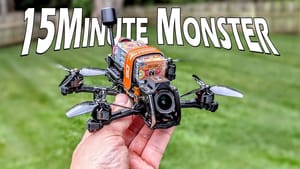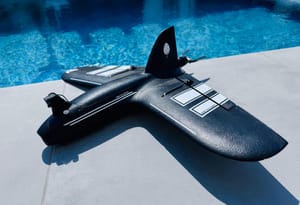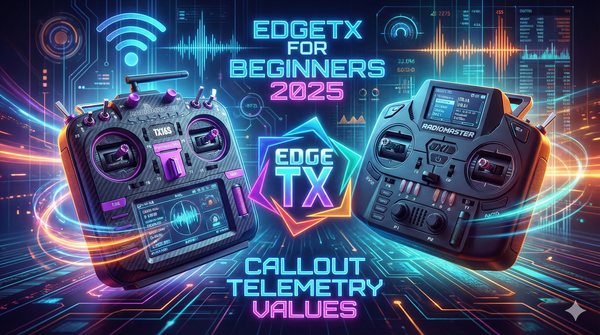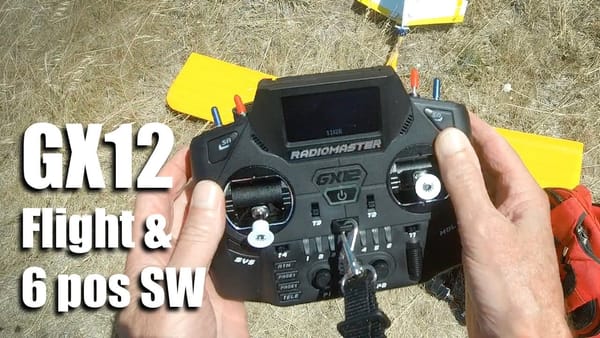
In this short, practical walkthrough Painless360 explains how to set up a very basic model on an EdgeTX-powered radio for a multirotor — the quick bits every beginner needs to stop faffing and start flying. If you’re moving from FrSky, Futaba, Spektrum, or you’re brand-new to the hobby, this is exactly the kind of no-nonsense guide you want. Below I’ve turned the video into a readable step-by-step report with technical notes, screenshots and a few pointers to follow-up reading.
What this guide covers
- Creating a new model (blank and wizard)
- Grouping models with labels
- Default mixer/channel layout for multirotors
- Adding essential switches: Arm, Modes, and Buzzer
- Setting up the front-screen widgets for useful telemetry
- Enabling external RF (CRSF / ExpressLRS) and the final binding step
Why this matters
Painless360’s short explanation saves you from two classic beginner mistakes: (1) creating a model without the correct control channels, and (2) forgetting to assign an arm switch (and then wondering why your quad won’t arm). EdgeTX defaults match what most flight stacks like Betaflight expect, so following the steps below gets a quad ready to bind and fly with minimal fuss.
Step 1 — Create the model (blank or wizard)
Open the model select menu: Manage Models → New. You’ll be offered a choice: create a blank model or use a wizard. Both work; the wizard speeds things up if you prefer guided setup. Labels are also available — handy for grouping quads, planes, cars or favourites so you’re not scrolling forever.
For very new radios the wizard files may be in internal memory rather than on an SD card — the experience is the same but the storage location differs. If your radio doesn’t show the wizard option, simply create a blank model and add channels manually (steps below).
Step 2 — Model basics and radio type
Once the blank model is created you’ll see the model tab where you can set the model name, attach labels and select the radio link type. These days you’ll often enable CRSF for ExpressLRS or similar external RF modules — make sure that’s turned on for the model you want to bind.
Step 3 — Mixer and default channel order
EdgeTX defaults to four primary controls in this order: Aileron, Elevator, Throttle, Rudder (A,E,T,R). That matches Betaflight and iNav expectations, so leave them as-is unless you have a special mapping requirement for your flight controller.
Note: You can rearrange these channels later if needed, but the default is the most compatible option for multirotors running standard flight firmware.
Step 4 — Add the essential extra channels (Arm + Modes)
Multirotors require more than just the four flight sticks. Add channel 5 for the arming switch and channel 6 for flight modes:
- In the Mixes menu click the plus button to add a new channel.
- Name channel 5 “Arm” (or similar) so when you return later you won’t forget what it does.
- For the Source, flick the switch you want to use to arm the quad — the radio detects the move automatically. Save it.
- Add channel 6 for Modes in the same way; flick the switch you’ll use for mode changes.
Now you have six channels: four mains (A/E/T/R), arm and mode. That’s the basic minimum many flight controllers expect.
Step 5 — Optional: Buzzer and extra functions
If you want a buzzer (very useful for lost-drone recovery), add another mix. Painless360 demonstrates putting the buzzer on channel 8 and naming it “Buzz” so it’s obvious later when configuring Betaflight’s beeper feature.
Give every extra channel a clear name. This little discipline prevents a lot of head-scratching when you next open the radio or configure the flight controller.
Step 6 — Use the wizard for speed (optional)
EdgeTX’s model wizard will ask what type of model you want — plane, glider, wing, or multirotor. Pick Multirotor and the wizard will prompt you to move the throttle, roll/pitch/yaw sticks and your chosen switches for arm, beeper and modes. Confirm the choices and the wizard will build the model automatically.
The wizard is a convenient way to avoid manual mistakes. Painless360 notes you might still want to tweak the beeper or mode channel order afterwards, but the wizard gets you 90% of the way there immediately.
Step 7 — Front screen widgets
Configure the radio’s front-screen widgets so key info is visible at a glance: outputs, model details, and timer are good choices. Painless360 sets up outputs (handy to watch channel values), model details (for quick reference) and a timer slot.
Step 8 — RF and binding
Before flying, ensure the model’s external RF (ExpressLRS / CRSF) is enabled. Go to the System menu → ExpressLRS (or your module’s menu) and perform the binding to the receiver associated with that quad. After binding, confirm the channel outputs in the radio match what the flight controller expects, then configure Betaflight/iNav mapping and failsafes on the flight controller side.
Technical notes & critical analysis
Painless360 keeps this guide deliberately minimal because most modern flight controllers and flight stacks prefer the straightforward AETR + arm + modes mapping. Overcomplicating the radio mix is where beginners often trip up — custom mixes are powerful, but they’re also a fast track to confusion if you don’t document what you’ve done.
Two practical tips:
- Always name your channels: The radio shows names in mixes and export tables. A tiny effort now saves you re-identifying channel 5 three months later.
- Check outputs before arming: Use the outputs widget to verify the channel moves and switch states are correct before you bind or plug into Betaflight.
Resources and further reading
Watch the original video by Painless360 for the live demo and narration — the visual steps make the process trivial: search for “Simple quad model setup (EdgeTX for Beginners 2025) - Painless360” on YouTube.
If you want to dive deeper into related topics, these guides on Unmanned Tech Shop are useful:
- What you need to build a beginner quadcopter
- Binding ExpressLRS receivers (beginner guide)
- How to change motor direction/order (useful after testing)
FAQ
Q: Do I need the wizard to make a model?
A: No. The wizard speeds things up and reduces errors, but you can create a blank model and add channels manually. If your radio doesn’t include the wizard files (some newer models), manual setup is the fallback.
Q: Which channel order should I use?
A: EdgeTX defaults to Aileron, Elevator, Throttle, Rudder — this is the standard used by Betaflight and iNav. Stick with the default unless you have a specific reason to change it.
Q: Which switch should I use to arm?
A: Any three-position or two-position switch you can comfortably reach. Painless360 recommends putting Arm on channel 5 and naming it clearly. Make sure your flight controller arming logic in Betaflight matches the switch position.
Q: What is CRSF and why enable it?
A: CRSF is the Crossfire-like protocol used by ExpressLRS and similar high-performance RF links. Enabling external RF (CRSF) in the model ensures the radio uses the correct transmitter module for binding and telemetry.
Q: Where do I configure beeper, failsafe and flight modes?
A: After setting up the radio channels, configure the receiver mapping, failsafe and beeper options in Betaflight (or iNav/ArduPilot). Use the buzzer channel you assigned to trigger the beeper and make sure failsafe actions are set correctly on the flight controller.
Final thoughts
Painless360’s video is the kind of practical, short tutorial beginners love: no fluff, clear steps, and sensible defaults. The takeaway is simple — create a model, use the default AETR layout, add arm and modes on channels 5 and 6, name everything, and verify outputs before binding and arming. Do that and you’re most of the way to a safe, flyable setup.
If you found this write-up useful, consider watching the original video and exploring Painless360’s EdgeTX for Beginners playlist for the next steps. Happy flying — and don’t be the person who tries to use an M3 screw where an M5 belongs.
This article was created from the video Simple quad model setup (EdgeTX for Beginners 2025).






